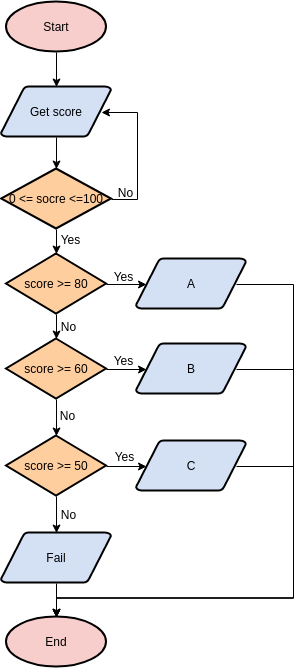Lab 03 Python Basics (I)
1. Flowchart
A Flowchart is a diagrammatic representation of an algorithm. It can be helpful for both writing programs and explaining the program to others. A Flowchart is very useful in programming, as it explains a process clearly through symbols and text. Moreover, a flowchart gives you the gist of the process flow in a single glance.
Here we begin to learn the flowchart with if and
else in Python. Copy the following lines into
your script:
# importing "random" for random operations
import random
# Using random() function to generate one random value between 0 and 1
Score = round(random.random()*100)
print(Score)
# Get level
if (Score >= 90):
print("Excellent")
elif (Score >= 60):
print("Pass")
else:
print("Fail")Selecting all the lines, and then run the script, what is your result in Console? Here
Scoreis randomly generated usingrandom()function from therandomlibrary. Typehelp(random)for help. You can play with this script a few times to get different outputs.Draw a flow chart based on this script.
Update your script to reflect the following flowchart.

2. Building a guessing game
Set a secret integer from
0to9, name the integeranswer. Make sure your deskmate does not know the secret number.Write a function that does the following: if your deskmate is able to guess your secret number correctly, print
You Win!, otherwise printYou Lose! I Win!Let your deskmate play the game.
Now it’s your turn to play your deskmate’s game.